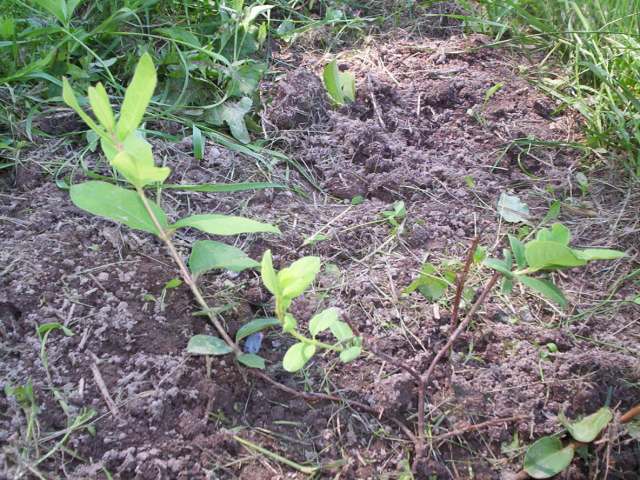While down on my knees hand weeding the haskap plants in our orchard I was shocked to find blue treasure! Yes, there at the end of the older wood (but still first year growth) was a Lonicera Caerulia berry! I found six of these precious gems on six bushes, or on 2% of the Tundra plants. No berries were found on any Borealis or Berry Smart Blue plants. No berries were found on the year old plants (2nd year growth) that had produced blossoms earlier in the season. So what was it that made those select 2% Tundra plants so special?
These bushes were propagated by tissue culture in the winter of 2011, nurtured in the greenhouse in Canada until mid June, shipped to Minnesota and planted at the end of June. Six weeks later these berries were discovered. Even though the berries look ripe on the outside, the one berry I sampled was quite tart, indicating it lacked a few weeks yet to fully ripen inside.
"Starting with day zero when the flower is fertilized, cell division occurs during days 0 – 23. High respiration occurs during this phase, i.e. plant uses lots of energy to build cells. This may be the most crucial phase for watering haskap. Cell expansion occurs during days 24 – 42, when the cells get filled with water. The berry is green and very firm until day 23. Almost overnight it turns blue on the outside, but needs about three more weeks for the inside to turn dark blue indicating it is fully ripe." (James Dawson, grad student, U of S)
What I've seen of Tundra and Borealis is that they can be expected to grow about a foot a year, up to their adult height of approximately 4 feet. I have seen their growth stunted in highly alkaline soil (>7) and heard that highly acidic soil (<5) is not ideal either. Our foot of topsoil has plenty of organic matter with ph 6.5 and heavy clay underneath. The plants have done very well so far with plentiful rainfall this year. Bernis, northern MN



No comments:
Post a Comment